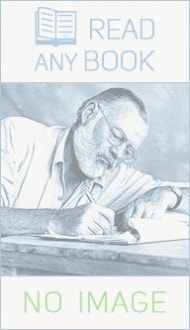Author Walpole Horace
39
Horatio Walpole, 4th Earl of Orford (24 September 1717 – 2 March 1797), more commonly known as Horace Walpole, was an English art historian, man of letters, antiquarian and politician. He is now largely remembered for Strawberry Hill, the home he built in Twickenham, south-west London where he revived the Gothic style some decades before his Victorian successors, and for his Gothic novel, The Castle of Otranto. Along with the book, his literary reputation rests on his Letters, which are of significant social and political interest. He was the son of Sir Robert Walpole, and cousin of Lord Nelson. Walpole was born in London, the youngest son of British Prime Minister Robert Walpole. Like his father, he was educated at Eton College and King's College, Cambridge.[1] After university, Walpole went on the Grand Tour with the poet Thomas Gray, but they did not get on well. During his time in France, he bonded with Madame du Deffand, but there is no evidence that there was a sexual relationshi
...p between the two. Walpole returned to England in 1741, entering Parliament, becoming Member of Parliament for Callington, Cornwall. He remained an MP after the death of his father in 1745 and this would last until 1768. He was never politically ambitious, although he was involved in the John Byng case of 1757.[2] His lasting architectural creation is Strawberry Hill, the home he built in Twickenham, south-west London in which he revived the Gothic style many decades before his Victorian successors. This fanciful concoction of neo-Gothic began a new architectural trend.[3] His father was created Earl of Orford in 1742. Horace's elder brother, the 2nd Earl of Orford (c.1701–1751), passed the title on to his son, the 3rd Earl of Orford (1730–1791). When the 3rd Earl died unmarried, Horace Walpole became the 4th Earl of Orford. In 1769, the forger Thomas Chatterton sent Rowley's History of England, allegedly by Rowley, to Walpole, who was briefly taken in. When Chatterton killed himself in 1770, Walpole was unjustly accused of having provoked the suicide.[4] Following his father's politics, he was a devotee of King George II and Queen Caroline, siding with them against their son, Frederick, Prince of Wales, about whom Walpole wrote spitefully in his memoirs. Walpole was a frequent visitor to Boyle Farm, Thames Ditton, to meet both the Boyle-Walsinghams and Lord Hertford. His father was created Earl of Orford in 1742. Horace's elder brother, the 2nd Earl of Orford (c.1701–1751), passed the title on to his son, the 3rd Earl of Orford (1730–1791). When the 3rd Earl died unmarried, Horace Walpole became the 4th Earl of Orford, and the title died with him in 1797. Strawberry Hill had its own printing press which supported Horace Walpole's intensive literary activity.[5] In 1764, he anonymously published his Gothic novel, The Castle of Otranto, and claimed that it was a translation "from the Original Italian of Onuphirio Muralto" on its title page. The second edition's preface, according to James Watt, "has often been regarded as a manifesto for the modern Gothic romance, stating that his work, now subtitled 'A Gothic Story', sought to restore the qualities of imagination and invention to contemporary fiction".[6] However, there is a playfulness in the prefaces to both editions and in the narration within the text itself. The novel opens with the son of Manfred (the Prince of Otranto) being crushed under a massive helmet that appears via supernatural causes. However, that moment, along with the rest of the unfolding plot, includes a mixture of both ridiculous and sublime supernatural elements. The plot finally reveals how Manfred's family is tainted in a way that served as a model for successive Gothic plots.[7] From 1762 on, he published his Anecdotes of Painting in England, based on George Vertue's manuscript notes. His memoirs of the Georgian social and political scene, though heavily biased, are a useful primary source for historians. In one of the numerous letters, from 28 January 1754, he coined the word serendipity which he said was derived from a "silly fairy tale" he had read, The Three Princes of Serendip. The oft-quoted epigram, "This world is a comedy to those that think, a tragedy to those that feel," is from a letter of Walpole's to Anne, Countess of Ossory, on 16 August 1776. The original, fuller version was in what he wrote to Sir Horace Mann on 31 December 1769: "I have often said, and oftener think, that this world is a comedy to those that think, a tragedy to those that feel – a solution of why Democritus laughed and Heraclitus wept." In Historic Doubts on the Life and Reign of King Richard III (1768), Walpole defended Richard III against the common belief that he murdered the Princes in the Tower. In this he has been followed by other writers, such as Josephine Tey and Valerie Anand. This work, according to Emile Legouis, shows that Walpole was "capable of critical initiative".[2] Walpole's sexual orientation has been the subject of speculation. He never married, engaging in a succession of unconsummated flirtations with unmarriageable women, and counted among his close friends a number of women such as Anne Seymour Damer and Mary Berry named by a number of sources as lesbian.[8] Many contemporaries described him as effeminate (one political opponent called him "a hermaphrodite horse").[9] Some previous biographers such as Lewis, Fothergill, and Robert Wyndham Ketton-Cremer, however, have interpreted Walpole as asexual.[10] Walpole died in 1797, after which his title became extinct. He left behind a massive amount of his correspondence, and these were published in many volumes starting in 1798. Likewise, a large collection of his works, including historical writings, was published immediately after his death.[2]
MoreLessShow More Show LessBooks by Walpole Horace:
Write Review:












User Reviews: